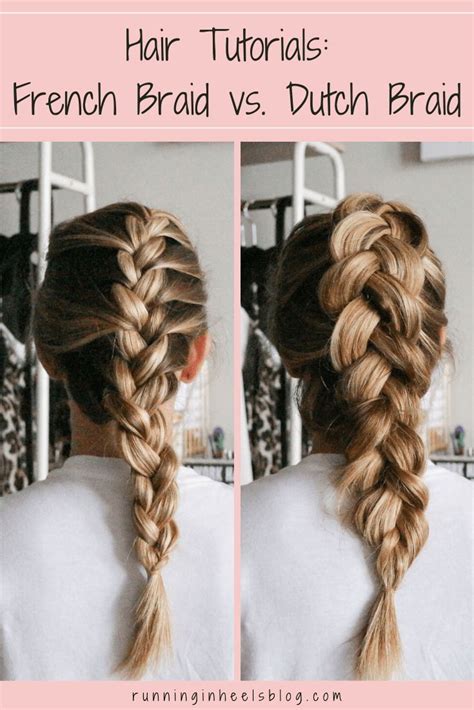Introduction
Braiding is a versatile hairstyling technique that has been used for centuries across various cultures. Among the most popular braiding styles are the Dutch braid and the French braid, both offering unique looks and distinct characteristics. This article delves into a comprehensive comparison of these two braiding techniques, exploring their similarities, differences, and practical applications.

Dutch Braid vs. French Braid: In Numbers
1. Weaving Technique:
– Dutch braid: Strands are placed under the braid.
– French braid: Strands are placed over the braid.
2. Appearance:
– Dutch braid: More voluminous and raised, resembling a crown.
– French braid: Flatter and tighter, giving a classic appearance.
3. Difficulty Level:
– Dutch braid: Easier for beginners compared to the French braid.
Similarities and Differences: Unraveling the Details
Similarities:
- Three-strand braiding technique
- Versatile styling options (ponytails, buns, partial braids)
- Suitable for various hair types
- Enhance hair texture and create volume
Differences:
| Feature | Dutch Braid | French Braid |
|---|---|---|
| Weaving Direction | Strands under the braid | Strands over the braid |
| Appearance | Raised and voluminous | Flat and tighter |
| Difficulty | Easier | More challenging |
| Versatility | Can create a more diverse range of styles | Classic and elegant look |
Applications and Style Inspiration
Dutch Braids:
- Half-up Princess Braid: Braids the top half of hair into a Dutch braid, creating a tiara-like effect.
- Dutch Braid Crown: Braided around the head to form a regal crown.
- Dutch Waterfall Braid: Loosely braids hair, allowing strands to cascade down like a waterfall.
French Braids:
- Classic French Braid: Braided tightly down the back of the head for a timeless and elegant look.
- French Side Braid: Braided along one side of the head, creating a romantic and asymmetrical style.
- Dutch Braid Bun: Combines a Dutch braid with a bun, creating a sophisticated and versatile hairstyle.
Pros and Cons: Weighing the Options
Dutch Braids:
Pros:
– Adds volume and texture to hair
– Easier to learn and braid
Cons:
– Can become messy more quickly
– May not be suitable for fine or slippery hair
French Braids:
Pros:
– Creates a tight, sleek look
– Versatile and suitable for most hair types
– Can be dressed up or down
Cons:
– More challenging to learn and braid
– Can pull on hair, causing discomfort
Step-by-Step Guide: Mastering the Techniques
Dutch Braid:
- Divide hair into three equal strands.
- Crisscross the right strand under both the middle and left strands.
- Bring the left strand under the middle and right strands.
- Repeat steps 2 and 3, alternating sides (right under, left under).
- Secure with an elastic band.
French Braid:
- Divide hair into three equal strands.
- Crisscross the right strand over the middle and left strands.
- Bring the left strand over the middle and right strands.
- Add a small section of hair from the right side to the right strand.
- Repeat steps 2-4, alternating sides and adding sections of hair.
- Secure with an elastic band.
Conclusion: Finding the Ideal Braid
The choice between a Dutch braid and a French braid ultimately depends on personal preferences and hair type. Dutch braids are easier to learn and braid, while French braids provide a classic and versatile look. Both braiding techniques offer endless styling possibilities, allowing individuals to create unique and captivating hairstyles that complement their personal style.
